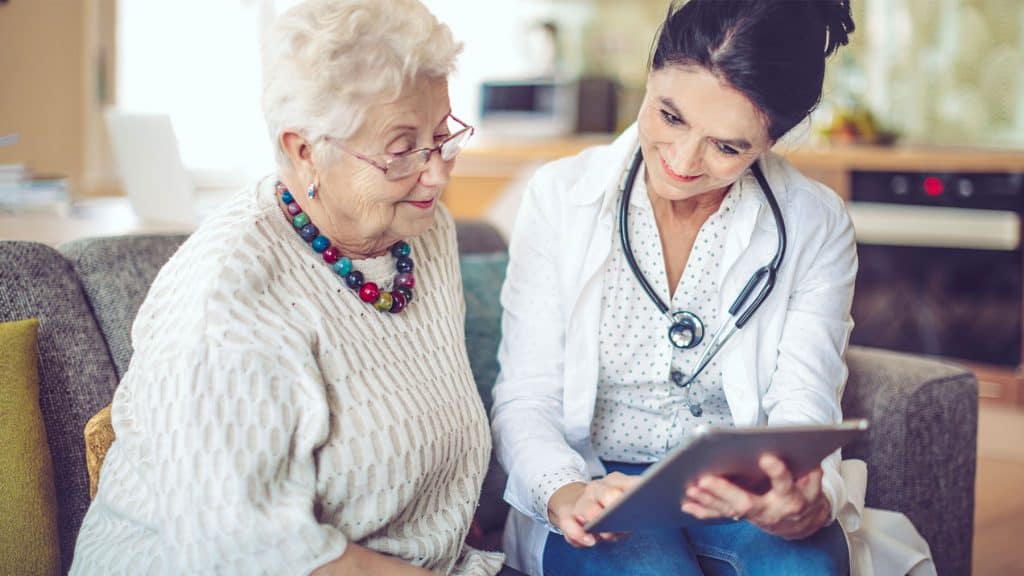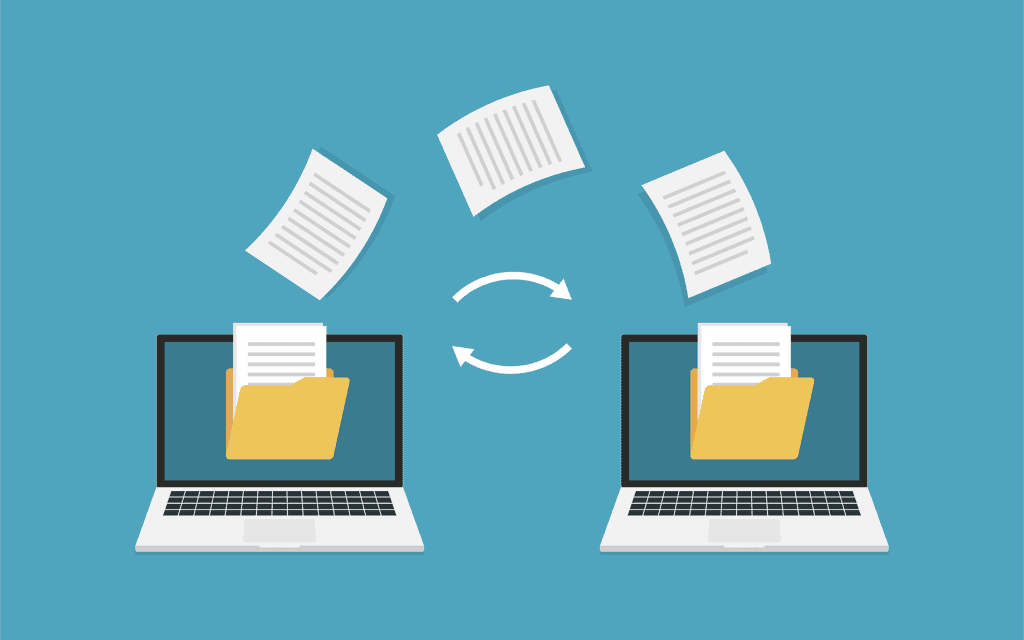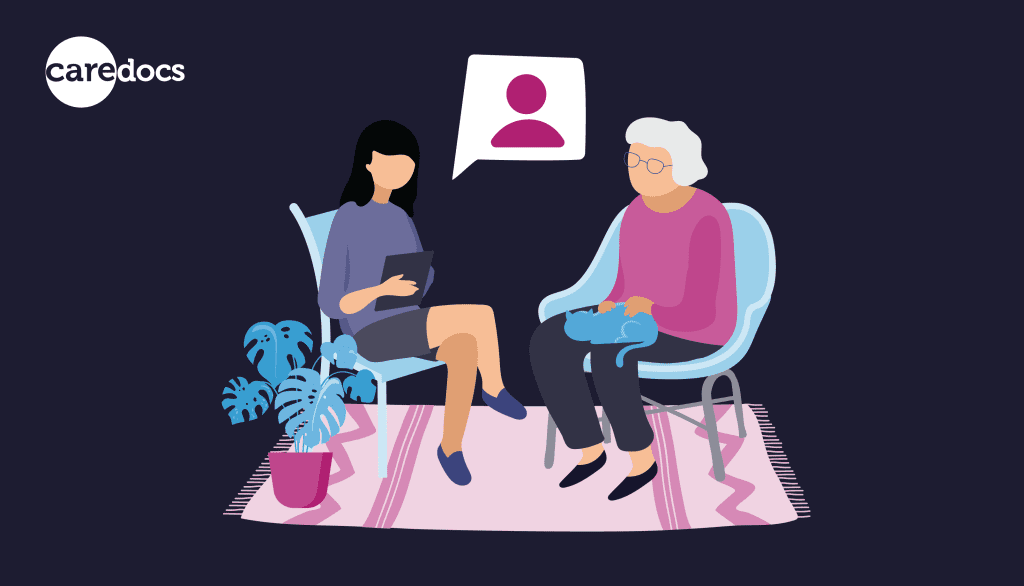How keeping electronic records in care homes improves care & efficiency
- Categories: Digital Transformation
Joe Webber
Share this article
Improving care & efficiency in your care home
Advances in communication and technology are enabling new ideas and innovations to come to life. From health, to automotive, to finance – big industries are seeing a shift in how they operate and function.
Using modern technology in health and social care offers huge benefits. It can help provide us and our loved ones with improved integrated care and better prevention from illness. The UK government have also recognised the advantages of implementing technology in care settings and have advised all care providers to consider how it could help prevent and control infections, as well as keep us all connected to combat loneliness and isolation.
In the last few years, technologies such as machine learning and artificial intelligence have illustrated the potential role they can play in health care. Such technology offers hospitals and health professionals predictive capabilities that will help provide enhanced services. Genome Sequencing is also emerging as a future pillar of health, being able to better understand how diseases affect us differently, and how best to subsequently manage this. But as well as these big concepts that may still be a few years away from reaching complete integration, there are technologies already used and leveraged by many health professionals that are showcasing how to save time, improve communication and offer a better service for individuals.
Let’s take care homes for example – many are finding themselves being able to offer more effective services by utilising technology already available.

Keeping electronic records
Care records have always been a vital part of care homes. Recording key metrics from a resident’s day helps those in care understand how best to continue with medications, rehabilitation and general care.
Switching to electronic record keeping in care homes has proven to be a simple but pivotal move for many care homes. Traditional pen and paper is timely, prone to mistakes, and can be difficult to distribute, share and store. Care home software overcomes these challenges and helps those working in care homes record key information, quickly, conveniently and securely. The data can then be instantly analysed, shared and acted upon to further improve a resident’s care.
Digital records also support a concept known as “connected health” – a term used to describe technology enabled care. By having data that’s easier to access for both health professionals and service users, it can improve confidence in the care being delivered and received. Staff and residents become “connected” to the information and data, so helps ensure proper care takes place.
Using dedicated mobile devices, such as smartphones and tablets, means recording this data has also become much easier. Carers don’t need to spend hours a day doing paperwork and repetitive tasks. Instead, they can concentrate on what they do best – caring. Devices with internet connection can access resident information remotely and record care with a few taps of the finger. This also enables point of care recording in real time. The work is then automatically saved and shared using secure online systems.
Benefits of keeping electronic records

Electronic records in care homes provides specific advantages, including:
- Security of data
Data can be stored in secure web applications and systems to help protect personal data. - Easy to retrieve data
Residents and carers can access key data, even remotely, allowing for a more efficient service. - Person-centred care
By sharing the data more freely with residents, it empowers them and encourages them to be more involved in the management and decisions affecting their care. - Improve diagnosis and treatment
The more data that’s recorded and shared, helps professionals spot patterns or key insights to help them make important decisions. This is particularly useful for patients with chronic illnesses. Specialists may also be able to quickly analyse data and make recommendations. - Improved communication
Carers, residents and family members can all contribute and communicate ideas and data to help illustrate how current care is going and potential changes going forward. - Save time and money
Digital technology such as electronic record keeping helps care homes save time, resources and money. - Resident empowerment
Residents feel more empowered and engaged with the health care system. - Care coordination
Care for the elderly or disabled often involves combing the efforts of lots of different types of health professionals and carers. Electronic record keeping helps coordinate all the different providers involved much easier.
Recording keeping in care homes
Electronic record keeping is only the start for how care homes can embrace technology to save them time and money. As new innovations develop and new technologies emerge, care homes are likely to continue to see benefits for their staff and their residents.
If you’d to learn more about our care home software as well as discuss how to leverage new technologies in your care home, please don’t hesitate to get in touch. Our expert team can help ensure you have everything you need to support you in providing a first-class service.
For more information about how CareDocs can make a difference for your care home, call us on 0330 056 3333 or email us at sales@caredocs.co.uk.
Want more information on mobile care recording?
Check out this free ebook:
Introduction to point of care recording
Share this article
Author
Joe Webber
Search
Recent articles
- CareDocs Partners with the Professional Record Standards Body (PRSB) to Support Care Standards Fit for the Future of Digital Care January 30, 2024
- CareDocs Joins the Care Software Providers Association (CASPA), an Independent, Not for Profit Association, Representing Software in the Care Industry January 19, 2024
- CareDocs partners with Bristol Waste to tackle digital poverty January 10, 2024
Recent comments
- 1.2. Assess use of care plans in applying person-centered values - CIPD Writers on What is person centred care planning and why is it important?
- Call tracking tips for care home marketers - Chester Times on The importance of effective communication in care
- Why is effective communication important for positive relationships with individuals in care? - Building-Craft on The importance of effective communication in care











